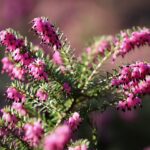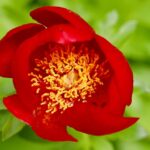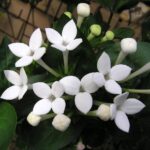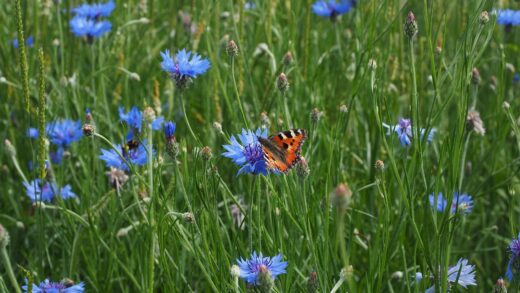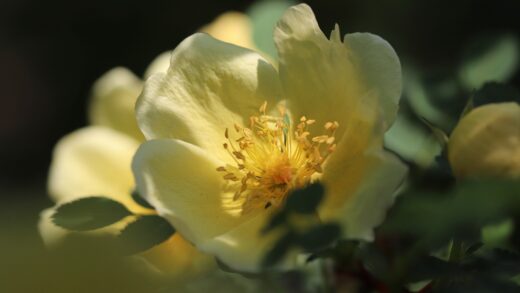Successfully overwintering bouvardia is a critical task for gardeners in climates where temperatures drop below freezing, as these tender perennials are not equipped to survive frost. Native to the warm regions of Central America, bouvardia requires a period of dormancy in cooler conditions to rest and conserve energy for the next growing season. This process is not merely about survival; a proper overwintering period can lead to a more vigorous and floriferous plant in the following spring. Providing the right environment during these winter months involves reducing water, ceasing fertilization, and ensuring protection from harsh temperatures. Mastering this seasonal transition is key to enjoying your bouvardia for many years.
The preparation for overwintering should begin in the autumn, well before the first expected frost date. As the days shorten and temperatures begin to fall, the plant’s growth will naturally slow down. This is the signal to start adjusting your care routine. Gradually reduce the frequency of watering, allowing the soil to dry out more between sessions than you would during the peak of summer. It is also essential to stop all fertilization by early to mid-autumn. Continuing to feed the plant would encourage new, tender growth that is particularly vulnerable to cold damage and would hinder the plant’s ability to transition into dormancy.
Before bringing a container-grown bouvardia indoors for the winter, it is a good practice to give it a preparatory pruning. Cut the plant back by about one-third to one-half of its size. This not only makes the plant more compact and manageable for an indoor space but also removes any weak or leggy growth. A thorough inspection for any pests is also crucial at this stage. Check the leaves, stems, and soil for any signs of insects like aphids or whiteflies. Treating any infestations before bringing the plant inside will prevent the pests from spreading to your other houseplants.
The ideal location for overwintering a dormant bouvardia is a cool, bright spot where temperatures remain consistently between 7 and 13 degrees Celsius. An unheated garage with a window, a cool basement with grow lights, a frost-free greenhouse, or an enclosed porch are all excellent options. The goal is to keep the plant cool enough to remain dormant but well above freezing. The plant still requires some light during this period, so a completely dark location is not suitable unless the plant loses all its leaves, which can sometimes happen.
Once the plant is in its overwintering location, its care requirements become minimal. The primary task is to monitor the soil moisture and provide just enough water to prevent the root ball from completely drying out. This might mean watering very sparingly, perhaps only once every three to four weeks. The soil should feel dry to the touch several inches down before you consider adding any water. Overwatering during dormancy is one of the most common mistakes and will almost certainly lead to root rot.
Preparing the plant for winter
The transition from the outdoor growing season to indoor winter dormancy should be a gradual process to avoid shocking the plant. As autumn temperatures begin to drop, especially at night, it is time to start preparing your bouvardia. If the plant has been growing in a garden bed, it will need to be carefully dug up and potted. Try to retain as much of the root ball as possible and plant it in a container with well-draining soil that is just large enough to accommodate the roots comfortably.
Whether your bouvardia is already in a pot or newly dug, the next step is a thorough clean-up and inspection. Remove any dead or yellowing leaves, spent flowers, and any other debris from the plant and the soil surface. This sanitation helps to reduce the chances of fungal diseases developing during the winter. This is also the prime opportunity for a meticulous pest check. Examine the undersides of leaves and the joints where leaves meet stems, as these are common hiding spots for pests. If you find any, treat the plant with insecticidal soap or neem oil before it comes inside.
Pruning is a key part of the preparation process. Cutting the bouvardia back significantly reduces its water needs and makes it a more manageable size for its winter quarters. Using clean, sharp pruning shears, trim the stems back by at least one-third. This may seem drastic, but it is beneficial for the plant, encouraging it to focus its energy on its root system during dormancy. This “hard prune” will also stimulate bushier, more compact growth when the plant re-emerges in the spring.
The final step before moving the plant to its final winter spot is a brief transition period. If possible, move the potted bouvardia to a sheltered location outdoors, such as a covered patio, for a few days. This helps it acclimate to lower light levels and reduces the stress of a sudden move from a bright outdoor environment to a dimmer indoor one. After this short adjustment period, the plant is ready to be brought into its cool, protected overwintering location.
Ideal overwintering conditions
The environment you provide for your bouvardia during its winter dormancy is the single most important factor in its survival. The primary goal is to find a location that is cool, but remains consistently above freezing. The ideal temperature range for a dormant bouvardia is between 7 and 13 degrees Celsius. Temperatures within this range are low enough to keep the plant in a state of rest, preventing it from trying to produce new, weak growth, but warm enough to protect it from any frost damage.
Light is another important consideration. While a fully dormant plant has reduced light needs, it should not be kept in complete darkness for the entire winter. A location that receives some bright, indirect light is best. This could be a north-facing window in a cool room, an unheated sunroom, or a garage with a window. If a naturally lit spot is not available, you can supplement with a simple fluorescent shop light or a grow light set on a timer for a few hours each day. This minimal light helps the plant maintain basic metabolic functions without stimulating active growth.
Humidity is generally not a major concern for a dormant bouvardia, as the cool temperatures mean that water does not evaporate as quickly. In fact, high humidity combined with cool temperatures can increase the risk of fungal diseases like gray mold. Therefore, good air circulation is beneficial. If the space is very still, using a small fan on a low setting for an hour or two each day can help to keep the air moving and prevent fungal spores from settling on the plant.
Consistency is key. Avoid placing your overwintering bouvardia in a location with wild temperature swings, such as near a heating vent or a drafty door that is frequently opened. A stable, cool environment allows the plant to remain in a deep, restful state of dormancy. This uninterrupted rest period is crucial for the plant to build up the energy reserves it will need to burst forth with vigorous growth and abundant flowers once spring arrives.
Watering and care during dormancy
Caring for a bouvardia during its winter dormancy is primarily a practice of restraint. The plant’s metabolic activity slows to a crawl, and its need for water drops dramatically. The most significant danger during this period is overwatering, which can easily lead to root rot in the cool, slow-drying soil. Your watering schedule should shift from a routine based on days to one based entirely on the condition of the soil. You must let the soil dry out significantly between waterings.
To check if it’s time to water, insert your finger deep into the soil. It should feel dry at least 5-7 centimeters down. When you do water, do so sparingly. Provide just enough water to lightly moisten the soil, but not so much that it becomes saturated or that a large amount runs out of the drainage holes. The goal is simply to prevent the root system from becoming completely desiccated. Depending on the temperature and humidity of your storage location, you may only need to water once every three to six weeks.
During dormancy, there is absolutely no need for fertilizer. The plant is not actively growing and cannot utilize the nutrients. Adding fertilizer to the soil of a dormant plant will only lead to a buildup of mineral salts that can damage the roots. Withhold all fertilizer from the time you bring the plant in for the winter until you see the first signs of new growth in the spring. This is a non-negotiable rule for successful overwintering.
Aside from occasional watering, your only other task is to periodically inspect the plant. Check for any signs of pests that may have survived the initial treatment or for the development of any diseases like powdery mildew or mold. Remove any leaves that yellow and drop off to keep the area clean and reduce the risk of fungal growth. This minimal-intervention approach allows the bouvardia to have the deep, uninterrupted rest it needs to prepare for the next season.
Waking up the plant in spring
As the days begin to get longer and warmer in late winter or early spring, it is time to start the process of waking up your bouvardia from its dormancy. The first sign that the plant is ready to resume growth is often the swelling of leaf buds on the stems or the emergence of tiny new shoots from the base of the plant. This is your cue to begin gradually reintroducing the conditions that support active growth.
The first step is to increase the amount of light the plant receives. Move it from its cool, dim winter location to a warmer spot with brighter, indirect sunlight. An east-facing window is often an ideal location, as it provides gentle morning sun that is not too intense. This increase in light and warmth will signal to the plant that the growing season has begun and will stimulate it to break dormancy.
At the same time you increase the light, you can also gradually increase the frequency of your watering. Begin by watering it thoroughly once, allowing the excess to drain away. Then, return to the practice of checking the top layer of soil, watering again whenever the top 2-3 centimeters feel dry. As the plant produces more leaves, its water needs will continue to increase, and you can adjust your watering schedule accordingly.
Once you see clear signs of active new growth, you can provide the plant with its first dose of fertilizer for the season. Start with a balanced, water-soluble fertilizer mixed at half the recommended strength. This first feeding provides a gentle boost of nutrients to the waking plant without overwhelming its still-recovering root system. After a couple of weeks, you can resume your regular fertilization schedule. After the last threat of frost has passed, you can begin the process of hardening the plant off to gradually reintroduce it to outdoor conditions.

